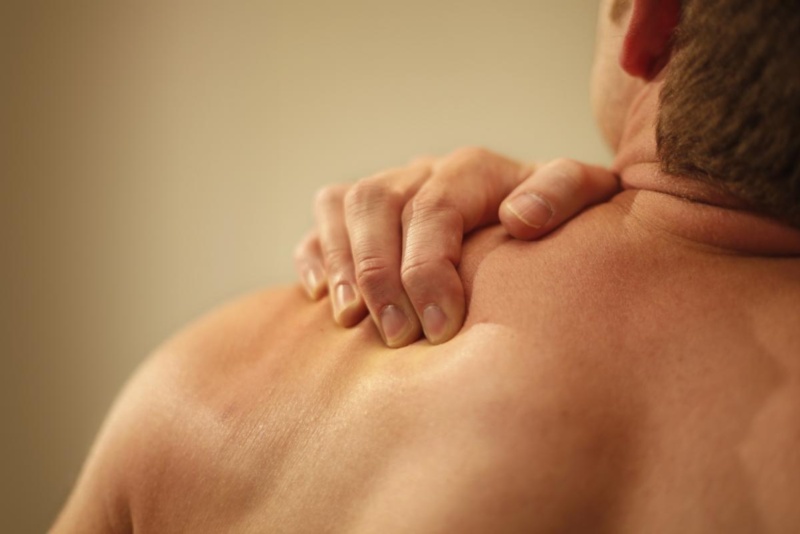 Think of your body as a race car. If the car is out of alignment it will tear up the ball joints and tires. And if you add more horsepower and speed to the car, that destruction will get even worse.
Think of your body as a race car. If the car is out of alignment it will tear up the ball joints and tires. And if you add more horsepower and speed to the car, that destruction will get even worse.
Unfortunately, the likelihood that your body is also out of alignment is very high. In fact, if you’re a hard-training person I can almost guarantee it. As we constantly push ourselves to get bigger and stronger, hip, back or knee pain can occur or worsen.
Over the years I’ve been a big proponent of foam rolling, stretching, and other forms of corrective exercise. If your IT band is tight and painful, you foam roll it. If your hip flexors are stiff, you stretch them. And if the glutes aren’t firing correctly you should do hip thrusts. While all of those exercises have their place, the results I was getting with clients didn’t convince me that any were addressing the source of the problem.
For the past year I’d been hearing big praise from my colleagues for the neuromuscular repositioning techniques taught by the Postural Restoration Institute. So I took their myokinematic and pelvis restoration courses. It was terrific training that confirmed my suspicions that the usual foam rolling and stretching modalities weren’t targeting the problem.
Many dysfunctions, whether it’s knee, back or shoulder pain originate from a pelvis that’s misaligned. Specifically, if you suffer from pain in those areas your left pelvis is probably anteriorly tipped and forwardly rotated toward the right. This causes dysfunctions in a line of muscles that starts with your diaphragm and runs in a continuous chain down to the outside of your knee at the vastus lateralis attachment. When the pelvis rotates and negatively affects this chain of muscles, PRI refers to it as a “left anterior interior chain pattern,” or a left AIC.
And you know what? You probably have a pelvis that’s rotated toward the right.
Now, how can I say that you probably have a left AIC pattern without testing you in person? Because the asymmetrical structure of your body is biased to rotate your pelvis to the right, and this creates the left AIC pattern mentioned above.
The human body is asymmetrical in structure and function. Structurally, you have a big liver on the right and a smaller heart on the left. You also have three lobes in your right lung and two lobes in your left. (The NY Times recently published an excellent article on the asymmetrical design of the body. It can be read at this link.)
Functionally, your left brain controls movement more than your right brain. And it’s your left brain that controls the right side of your body. This is why left-handed people are usually ambidextrous to some degree – the left brain favors the right side even if you write with your left hand.
When you consider the asymmetrical structure and function of the body, and add the fact that we live in a right-sided dominant world, it’s no surprise that your pelvis wants to rotate to the right. Indeed, we’re constantly shifted to the right side whether we’re driving or standing in line at the movies.
All of these factors can shift your pelvis to the right. When the pelvis shifts, everything above and below it must also shift out of ideal alignment. This is easy to confirm from a standing position. Just rotate your pelvis slightly toward the right and notice how your legs and upper body shift as well.
So now when clients come to me, the first thing I do is check their pelvis alignment. If the pelvis is out of alignment, all the typical stretching and strengthening exercises won’t fix their knee or low back pain.
It’s highly probable that your pelvis is shifted to the right, especially if you’re experiencing knee or low back pain. This is true even if you’re left-handed because a left-handed person has the same asymmetrical structure and function as a right-handed person.
The following video demonstrates the most effective corrective exercise I’ve used to date. It’s most effective because it pulls your pelvis back toward the left and into proper position, and this has far-reaching effects from your feet to your neck. It’s common for a client to come to me with knee or back pain, hold the following position for 15-20 seconds, and immediately experience less pain.
So before you train, be sure to get your hips in proper alignment. You’ll increase performance and reduce the likelihood of knee or back pain if you do. And if you suffer from knee or back pain, do this exercise every morning and evening for a week. If pain is reduced, continue for 4-6 weeks to establish better hip alignment.
Stay Focused,
CW


